-
Formation and Evolution of Planetary Stagnant Lids and Crusts Annu. Rev. Fluid Mech. (IF 25.4) Pub Date : 2025-06-03
Chloé Michaut, Anne Davaille, Stéphane LabrosseEarth is the only known planet with plate tectonics, which involves a mobile upper thermal boundary layer. Other terrestrial planets show a one-plate immobile lithosphere, or stagnant lid, that insulates and isolates their interior. Here, we first review the different types of lids that can develop on rocky and icy bodies. As they formed by accretion, involving high-energy impacts, terrestrial planets
-
Computational fluid dynamics-multibody system dynamics bidirectional coupling calculation and flow-induced vibration evaluation of a high-speed pantograph-catenary system Eng. Appl. Comput. Fluid Mech. (IF 5.9) Pub Date : 2025-06-03
Zhuojun Li, ChunJiang Chen, Huapu Song, Gang Yang, Jun Yang, Huadong Yao, Jiqiang Niu -
A four-field mixed formulation for incompressible finite elasticity Comput. Methods Appl. Mech. Eng. (IF 6.9) Pub Date : 2025-05-31
Guosheng Fu, Michael Neunteufel, Joachim Schöberl, Adam ZdunekIn this work, we generalize the mass-conserving mixed stress (MCS) finite element method for Stokes equations (Gopalakrishnan et al., 2019), involving normal velocity and tangential-normal stress continuous fields, to incompressible finite elasticity. By means of the three-field Hu–Washizu principle, introducing the displacement gradient and 1st Piola–Kirchhoff stress tensor as additional fields, we
-
High-cycle fatigue behavior of ultra-thin Ag interconnectors in GaAs cell arrays for deep space exploration: temperature cycling and impact of wind and dust particles Int. J. Fatigue (IF 5.7) Pub Date : 2025-05-30
Ming-Yuan Zhang, Xue-Mei Luo, Zhi-Bin Wang, Bing-Li Hu, Fu-Lai Cheng, Qi Gao, Hao Wang, Guang-Ping ZhangThe ultra-thin Ag interconnectors used for GaAs solar cell arrays applications face numerous challenges in deep space exploration missions, such as extreme temperature variations and the impact of wind and dust particles. In this study, finite element analysis was employed to investigate the effects of temperature cycling, as well as the impact of wind and dust particles. These analyses helped identify
-
Can KAN CANs? Input-convex Kolmogorov-Arnold Networks (KANs) as hyperelastic constitutive artificial neural networks (CANs) Comput. Methods Appl. Mech. Eng. (IF 6.9) Pub Date : 2025-05-29
Prakash Thakolkaran, Yaqi Guo, Shivam Saini, Mathias Peirlinck, Benjamin Alheit, Siddhant KumarTraditional constitutive models rely on hand-crafted parametric forms with limited expressivity and generalizability, while neural network-based models can capture complex material behavior but often lack interpretability. To balance these trade-offs, we present monotonic Input-Convex Kolmogorov-Arnold Networks (ICKANs) for learning polyconvex hyperelastic constitutive laws. ICKANs leverage the Kolmogorov-Arnold
-
A nodal ghost method based on variational formulation and regular square grid for elliptic problems on arbitrary domains in two space dimensions Comput. Methods Appl. Mech. Eng. (IF 6.9) Pub Date : 2025-05-29
Clarissa Astuto, Daniele Boffi, Giovanni Russo, Umberto ZerbinatiThis paper focuses on the numerical solution of elliptic partial differential equations (PDEs) with Dirichlet and mixed boundary conditions, specifically addressing the challenges arising from irregular domains. Both finite element method (FEM) and finite difference method (FDM), face difficulties in dealing with arbitrary domains. The paper introduces a novel nodal symmetric ghost method based on
-
Monitoring water quality parameters using multi-source data-driven machine learning models Eng. Appl. Comput. Fluid Mech. (IF 5.9) Pub Date : 2025-05-29
Yubo Zhao, Mo Chen, Jinyu He, Yanping Ma -
Fatigue life prediction of composite laminates based on energy conservation and damage entropy accumulation Int. J. Fatigue (IF 5.7) Pub Date : 2025-05-29
Yalin Han, Fuqiang Wu, Yuhao LianFatigue is an irreversible thermodynamic process accompanied by multi-component energy dissipation and entropy accumulation. This study analyzes the energy composition of total mechanical input hysteresis energy during the fatigue process of composites. By excluding thermal dissipation and viscoelastic internal friction dissipation energy, which do not directly contribute to fatigue damage, the irrecoverable
-
Three-dimensional micromechanical expression for the average strain tensor of granular materials J. Mech. Phys. Solids (IF 5.0) Pub Date : 2025-05-29
Chaofa Zhao, Ge Duan, Zhongxuan YangIn investigations of the behaviour of granular materials, the conversion of discrete contact information, specifically the force and displacement data, into macroscopic quantities such as stress and strain is a fundamental approach. The expression for the average stress tensor, a well-established formulation, involves the summation over all interparticle contacts while considering both the contact
-
Preface to the special issues of the International Journal of Damage Mechanics Int. J. Damage Mech. (IF 4.0) Pub Date : 2025-05-29
George Z. Voyiadjis -
A method for parameterized design and rapid optimization of axial flow pumps Eng. Appl. Comput. Fluid Mech. (IF 5.9) Pub Date : 2025-05-27
Kan Kan, Ye Li, Huixiang Chen, Siqi Gao, Jinbo Chen -
Very high cycle fatigue behaviour of a structural steel for offshore applications under a biaxial stress state Int. J. Fatigue (IF 5.7) Pub Date : 2025-05-27
Rita Dantas, Felipe Fiorentin, José A. F. O. Correia, Grzegorz Lesiuk, Abílio de JesusThe characterisation of the very high cycle fatigue (VHCF) regime has become pertinent due to the interest of extending the service life of engineering structures. However, the fatigue testing of materials at the longer lives of VHCF regime (usually greater than 10 million of cycles) is by far most efficient with an ultrasonic fatigue testing system, which introduces new challenges such as the specimen’s
-
Integrating discrete-variable anisotropic topology optimization with lamination parameter interpolation-based stiffness tailoring Comput. Methods Appl. Mech. Eng. (IF 6.9) Pub Date : 2025-05-26
Kai Sun, Gengdong Cheng, Gokhan SerhatThis paper introduces a novel computational design framework for topology and fiber path optimization of variable stiffness laminated composites. Based on the finite element discretization of the design domain, the topology and material stiffness are represented using elemental densities and lamination parameters (LPs), respectively. The density distribution is optimized via the discrete-variable topology
-
A partitioned Lagrangian finite element approach for the simulation of viscoelastic and elasto-viscoplastic free-surface flows Comput. Methods Appl. Mech. Eng. (IF 6.9) Pub Date : 2025-05-26
Giacomo Rizzieri, Liberato Ferrara, Massimiliano CremonesiMany materials, such as clays, fresh concrete, and biological fluids, exhibit elasto-viscoplastic (EVP) behaviour, transitioning between solid and fluid states under varying stress conditions. Among EVP models, Saramito’s constitutive law stands out for its thermodynamic consistency, smooth solid-to-fluid transition, and ability to accurately represent diverse materials with only four easily determinable
-
Experimental and simulation investigation on flow structures and energy transfer of rectangular jets with different aspect-ratios in crossflow Eng. Appl. Comput. Fluid Mech. (IF 5.9) Pub Date : 2025-05-26
Jue Wang (王珏), Shixuan Yu (余师漩), Gang Bai (白刚), Cheng Jiang (蒋诚), Jiayu Kang (康珈瑜) -
Computational study and field implementation of methods for the control of vortex shedding from a bridge caisson Eng. Appl. Comput. Fluid Mech. (IF 5.9) Pub Date : 2025-05-26
Yanwei Niu, Bassam A. Younis -
Fatigue performance and failure mechanisms of vacuum brazed AISI 304L joints with experimental nickel-based filler metals in air and corrosive environments Int. J. Fatigue (IF 5.7) Pub Date : 2025-05-26
Johannes L. Otto, Lukas M. Sauer, Cedric Marroni, Fabian Bersch, Alexander Delp, Hanigah Kanagarajah, Frank WaltherBrazing with nickel-based filler metals under vacuum is frequently applied for joining metals in applications that require high resistance to mechanical loads, corrosive environments and elevated temperatures. However, melting-point depressant elements in the filler can lead to brittle phases in the brazing seam, affecting crack initiation and propagation. This study investigated cylindrical butt joints
-
FFT-based Galerkin and level-set methods for the homogenized evolution of domain nuclei in ferroelectrics Comput. Methods Appl. Mech. Eng. (IF 6.9) Pub Date : 2025-05-25
Hsu-Cheng Cheng, Lu Trong Khiem Nguyen, Dennis M. KochmannWe introduce an FFT-based Galerkin homogenization scheme, which, in combination with the level-set method, allows us to study the evolution of ferroelectric domain nuclei in the experimentally relevant stress-driven setting. Our proposed framework includes an accelerated FFT-solver for solving the electromechanically coupled balance laws and a unified regularized driving force formulation for the level-set
-
Time series clustering adaptive enhanced method for time-dependent reliability analysis and design optimization Comput. Methods Appl. Mech. Eng. (IF 6.9) Pub Date : 2025-05-24
Dequan Zhang, Ying Zhao, Meide Yang, Chao Jiang, Xu Han, Qing LiAdaptive Kriging model has gained growing attention for its effectiveness in reducing the computational costs in time-dependent reliability analysis (TRA). However, the existing methods struggle to identify critical sample regions, leverage parallel computational resources, and assess the value for sample trajectories, thus restricting improvement in accuracy and efficiency. To address the challenges
-
Solving high-dimensional inverse problems using amortized likelihood-free inference with noisy and incomplete data Comput. Methods Appl. Mech. Eng. (IF 6.9) Pub Date : 2025-05-24
Jice Zeng, Yuanzhe Wang, Alexandre M. Tartakovsky, David A. Barajas-SolanoWe present a likelihood-free probabilistic inversion method based on normalizing flows for high-dimensional inverse problems. The proposed method is composed of two complementary networks: a summary network for data compression and an inference network for parameter estimation. The summary network encodes raw observations into a fixed-size vector of summary features, while the inference network generates
-
Framework for accurate fatigue life prediction of injection molded short glass fiber reinforced plastic parts Int. J. Fatigue (IF 5.7) Pub Date : 2025-05-24
Marc J.W. Kanters, Lucien F.A. Douven, Maxime A. MelchiorThis work presents a framework that allows designers to accurately estimate the fatigue lifetime of injection molded short fiber reinforced parts. The framework and its calibration are demonstrated on a large set of experimental data, increasing the complexity in loading conditions, anisotropy, and stress state, and demonstrated on two demonstrator parts. By step-by-step increasing complexity in both
-
Extending the Lattice Boltzmann Method to non-linear elastodynamics Comput. Methods Appl. Mech. Eng. (IF 6.9) Pub Date : 2025-05-23
Henning Müller, Erik Faust, Alexander Schlüter, Ralf MüllerThis work outlines a Lattice Boltzmann Method (LBM) for geometrically and constitutively non-linear solid mechanics to simulate large deformations under dynamic loading conditions. The method utilises the moment chain approach, where the non-linear constitutive law is incorporated via a forcing term. Stress and deformation measures are expressed in the reference configuration. Finite difference schemes
-
Accurate shakedown analysis of 2D problems based on stabilization-free hybrid virtual elements Comput. Methods Appl. Mech. Eng. (IF 6.9) Pub Date : 2025-05-23
F.S. Liguori, A. Madeo, S. Marfia, E. Sacco, G. GarceaShakedown analyses require a precise evaluation of pointwise elastic stresses and, at the same time, an accurate representation of the elastoplastic solution for capturing the ratcheting mechanisms effectively. However, existing discretization methods often face a trade-off: techniques that optimize plasticity performance may compromise elastic accuracy, and vice versa. The Hybrid Virtual Element Method
-
Digital twin-driven method for determining wind force coefficients of a bridge deck section Eng. Appl. Comput. Fluid Mech. (IF 5.9) Pub Date : 2025-05-23
Hao-Yang Li, You-Lin Xu, Hai-Li Liao, Lin Huang, Qi Wang -
Towards understanding the time-dependent microstructural evolution mechanism of GCr15 bearing in rolling contact fatigue Int. J. Fatigue (IF 5.7) Pub Date : 2025-05-23
Liming Shu, Jiahui Fan, Jianhua Liu, Liyu Lin, Yuanyu Wei, Zhenglong FangWe conducted an in-depth investigation into the subsurface-initiated rolling contact fatigue failure of GCr15 bearing elements subjected to high-cycle loading, emphasizing the comprehensive understanding on the time-dependent microstructural evolutions mechanism with respect to the rolling element ball and inner/out raceway. To this end, a specialized experimental strategy was implemented, maintaining
-
Parallel constrained Bayesian optimization via batched Thompson sampling with enhanced active learning process for reliability-based design optimization Comput. Methods Appl. Mech. Eng. (IF 6.9) Pub Date : 2025-05-22
Thu Van Huynh, Sawekchai Tangaramvong, Wei GaoThis paper proposes an effective and robust decoupled approach for addressing reliability-based design optimization (RBDO) problems. The method iteratively performs a parallel constrained Bayesian optimization (PCBO) with deterministic parameters based on the most probable point (MPP) underpinning limit-state functions (LSFs) sequentially updated through an enhanced active learning-based reliability
-
Reducing parameter tuning in topology optimization of flow problems using a Darcy and Forchheimer penalization Comput. Methods Appl. Mech. Eng. (IF 6.9) Pub Date : 2025-05-22
M.J.B. Theulings, L. Noël, M. Langelaar, R. MaasIn density-based topology optimization of flow problems, flow in the solid domain is generally inhibited using a penalization approach. Setting an appropriate maximum magnitude for the penalization traditionally requires manual tuning to find an acceptable compromise between flow solution accuracy and design convergence. In this work, three penalization approaches are examined, the Darcy (D), the Darcy
-
Research on a hybrid deep learning model based on two-stage decomposition and an improved whale optimization algorithm for air quality index prediction Eng. Appl. Comput. Fluid Mech. (IF 5.9) Pub Date : 2025-05-22
Hangyu Zhou, Yongquan Yan -
Micro-pores formation mechanism and porosity on the fatigue performance of dual laser-powder bed fusion of Ti6Al4V Int. J. Fatigue (IF 5.7) Pub Date : 2025-05-22
Guotai Li, Peichen Hu, Gang Chen, Mingjun Chen, Tianyu YuPorosity significantly impacts the fatigue performance and stability of dual laser additively manufactured metallic materials. This study presents a comparative analysis of the fatigue behavior of samples fabricated by single-laser powder bed fusion (SL-PBF) and dual-laser PBF (DL-PBF). It shows that porosity defects in the overlap region reduced the fatigue strength of DL-PBF samples by nearly 20 %
-
Double-scale time-dependent reliable topology optimization based on the first-passage failure and interval process theories Comput. Methods Appl. Mech. Eng. (IF 6.9) Pub Date : 2025-05-21
Xingyu Zhao, Lei WangIn this paper, a time-dependent reliability-based double-scale topology optimization (TO) framework considering manufacturability is proposed. The proposed TO model focuses on the structural transient dynamic performance subjected to general dynamic loads. A time-dependent interval non-probabilistic reliability theory based on the idea of first-passage is introduced into the double-scale TO model to
-
Quantum computer formulation of the FKP-operator eigenvalue problem for probabilistic learning on manifolds Comput. Methods Appl. Mech. Eng. (IF 6.9) Pub Date : 2025-05-21
Christian Soize, Loïc Joubert-Doriol, Artur F. IzmaylovWe present a quantum computing formulation to address a challenging problem in the development of probabilistic learning on manifolds (PLoM). It involves solving the spectral problem of the high-dimensional Fokker–Planck (FKP) operator, which remains beyond the reach of classical computing. Our ultimate goal is to develop an efficient approach for practical computations on quantum computers. For now
-
Deep mechanics prior - for the multiscale finite element method Comput. Methods Appl. Mech. Eng. (IF 6.9) Pub Date : 2025-05-21
Senlin Huo, Yong Zhao, Bingxiao Du, Zeyu Zhang, Yaqi Cao, Yiyu DuThe Multiscale Finite Element Method (MsFEM) decomposes the problem of solving partial differential equations with multiscale characteristics into two subproblems at two discrete resolution levels, i.e., the macroscopic one on a coarse mesh and the microscopic one on a fine mesh. The microscopic subproblems are used for constructing the Equivalent Stiffness Matrices (ESMs) of the coarse elements, and
-
Mesh-based super-resolution of fluid flows with multiscale graph neural networks Comput. Methods Appl. Mech. Eng. (IF 6.9) Pub Date : 2025-05-21
Shivam Barwey, Pinaki Pal, Saumil Patel, Riccardo Balin, Bethany Lusch, Venkatram Vishwanath, Romit Maulik, Ramesh BalakrishnanA graph neural network (GNN) approach is introduced in this work which enables mesh-based three-dimensional super-resolution of fluid flows. In this framework, the GNN is designed to operate not on the full mesh-based field at once, but on localized meshes of elements (or cells) directly. To facilitate mesh-based GNN representations in a manner similar to spectral (or finite) element discretizations
-
Adaptive phase-field modeling for electromechanical fracture in flexoelectric materials using multi-patch isogeometric analysis Comput. Methods Appl. Mech. Eng. (IF 6.9) Pub Date : 2025-05-21
Haozhi Li, Tiantang Yu, Zhaowei Liu, Jiaping Sun, Leilei ChenThe fracture of flexoelectric materials involves strain gradients, which pose challenges for theoretical and numerical analysis. The phase-field model (PFM) is highly effective for simulating crack propagation. However, PFM within the finite element method (FEM) framework faces certain challenges in simulating the fracture behavior of flexoelectric materials since the conventional FEM can only provide
-
A unit cell based multilevel substructuring method for fast vibration response calculations of finite metamaterial structures Comput. Methods Appl. Mech. Eng. (IF 6.9) Pub Date : 2025-05-21
Fei Qu, Lucas Van Belle, Wim Desmet, Elke DeckersLocally resonant metamaterial structures have gained significant attention across multiple engineering disciplines due to their ability to exhibit vibration stop bands not found in regular materials. These structures are composed of an assembly of unit cells, which are often discretized into large finite element models due to their sub-wavelength nature and intricate design. Moreover, due to the contribution
-
Adaptive phase-field cohesive-zone model for simulation of mixed-mode interfacial and bulk fracture in heterogeneous materials with directional energy decomposition Comput. Methods Appl. Mech. Eng. (IF 6.9) Pub Date : 2025-05-21
Pei-Liang Bian, Qinghui Liu, Heng Zhang, Hai Qing, Siegfried Schmauder, Tiantang YuInterfacial debonding, a critical failure mechanism in heterogeneous materials, is often characterized by mixed-mode fracture. This study develops a numerical framework to simulate bulk and interfacial fractures in composite materials. A phase-field cohesive zone model, incorporating a directional energy decomposition scheme and a modified toughness method, is employed to capture complex fracture behaviors
-
Learning physics-consistent material behavior from dynamic displacements Comput. Methods Appl. Mech. Eng. (IF 6.9) Pub Date : 2025-05-21
Zhichao Han, Mohit Pundir, Olga Fink, David S. KammerAccurately modeling the mechanical behavior of materials is crucial for numerous engineering applications. The quality of these models depends directly on the accuracy of the constitutive law that defines the stress–strain relation. However, discovering these constitutive material laws remains a significant challenge, in particular when only material deformation data is available. To address this challenge
-
Point cloud neural operator for parametric PDEs on complex and variable geometries Comput. Methods Appl. Mech. Eng. (IF 6.9) Pub Date : 2025-05-21
Chenyu Zeng, Yanshu Zhang, Jiayi Zhou, Yuhan Wang, Zilin Wang, Yuhao Liu, Lei Wu, Daniel Zhengyu HuangSurrogate models are critical for accelerating computationally expensive simulations in science and engineering, particularly for solving parametric partial differential equations (PDEs). Developing practical surrogate models poses significant challenges, particularly in handling geometrically complex and variable domains, which are often discretized as point clouds. In this work, we systematically
-
ANN vs. theoretical models for predicting crack path in fretting fatigue Int. J. Fatigue (IF 5.7) Pub Date : 2025-05-21
Raphael Araújo Cardoso, José Alexander Araújo, Lucival Malcher, André Luís Rodrigues AraújoFretting fatigue (FF) involves multiaxial and non-proportional stress states in addition to strong stress gradients, making crack propagation modeling challenging. In this work, we evaluate different models based on stress intensity factors (SIFs) to predict crack propagation kink angles under FF conditions, including both theoretical and artificial neural network (ANN) models. To train and test the
-
Fretting fatigue damage and crack propagation of shot-peening dovetail joints assisted with the U-Net model Int. J. Fatigue (IF 5.7) Pub Date : 2025-05-21
Zhiguo Wang, Zheng Wang, Kai Sun, Shi Chen, Yongfeng Zheng, Xiuyang Fang, Zhenbing CaiThis study systematically examines the fretting fatigue behavior of Ti-6Al-4 V dovetail joints with and without shot-peening (SP) treatment, focusing on crack initiation, propagation mechanisms, and SP-induced microstructural modifications. An innovative four-camera in situ observation system was developed to track real-time crack evolution at four critical locations of the dovetail tenon. Integrated
-
Effect of different precipitated phase structures on low-cycle fatigue properties of Mg-Gd-Y-Zn-Zr alloy Int. J. Fatigue (IF 5.7) Pub Date : 2025-05-21
Yayun He, Yun Cui, Rui Guo, Xi Zhao, Hangyu Xu, Shaowu FengThis study conducts low-cycle fatigue tests on an extruded magnesium alloy cabin. The relationship between the microstructure and macroscopic cyclic-deformation behavior was established by regulating the microstructure of the different precipitated phases. The results show that only the β’ phase is precipitated in the 200AT sample, and lamellar Long-Period Stacking Ordered (LPSO) phase and β’ phase
-
Description of void coalescence by internal necking/shearing within XFEM via a micromechanical 3D volumetric cohesive zone model ([formula omitted]-VCZM) J. Mech. Phys. Solids (IF 5.0) Pub Date : 2025-05-21
Antonio Kaniadakis, Jean-Philippe Crété, Patrice LongèreThis work addresses ductile failure in engineering structures, particularly in aerospace, naval, automotive, and nuclear industries. During accidental overloading or metal forming, materials such as titanium and aluminum alloys experience plastic deformation and ductile damage (by void nucleation, growth, and coalescence) that may eventually lead to crack propagation and fracture. The present study
-
Computational assessment of sustainable balsa and basalt composite sandwich for structural marine applications Int. J. Damage Mech. (IF 4.0) Pub Date : 2025-05-21
Mohamed Chairi, Jalal El Bahaoui, Issam Hanafi, Federica Favaloro, Chiara Borsellino, Fabia Galantini, Guido Di BellaIn response to environmental challenges and the demand for sustainability, this study explores a novel engineering structure, harnessing the potential of bio-based materials within the framework of composite sandwich structures. This investigation employs finite element modeling to assess sandwich structures composed of End-grain balsa wood and fiber-reinforced polymer (FRP) facesheets. These facesheets
-
Impact of propeller arrangement on aerodynamic performance for a high-lift distributed propulsion system Eng. Appl. Comput. Fluid Mech. (IF 5.9) Pub Date : 2025-05-20
Suqi Chen, Zheng Guo, Duoneng Liu -
Reliability analysis method for aircraft structure corrosion fatigue based on Chaboche model Int. J. Fatigue (IF 5.7) Pub Date : 2025-05-20
Zhang Zhuzhu, Mao Haitao, Huang Hailiang, Wu Xingjun, Shen Pei, Liu YulinA reliability analysis method for predicting the service life of aircraft structures considering corrosion damage has been proposed. This method introduces corrosion damage as the initial damage into the Chaboche fatigue cumulative damage model, and uses Monte Carlo method to simulate and reconstruct the corrosion fatigue damage process of the structure, achieving reliability analysis of the corrosion
-
A computational framework for predicting the effect of surface roughness in fatigue Int. J. Fatigue (IF 5.7) Pub Date : 2025-05-20
Sara Jiménez-Alfaro, Emilio Martínez-PañedaSurface roughness is a critical factor influencing the fatigue life of structural components. Its effect is commonly quantified using a correction coefficient known as the surface factor. In this paper, a phase field based numerical framework is proposed to estimate the surface factor while accounting for the stochastic nature of surface roughness. The model is validated against existing experimental
-
Early detection and monitoring of fatigue damage in medium carbon steel based on multi-micromagnetic NDT fusion method Int. J. Fatigue (IF 5.7) Pub Date : 2025-05-20
Zheng-Xiang Shen, Sheng-Jie Qian, Hui-Yu Ji, Wei-Wei Ji, Bo Xu, Yang ZhengBased on stress-controlled fatigue tests of 45 carbon steel notched specimens, an in-situ comprehensive evaluation of fatigue damage evolution was accomplished via micromagnetic non-destructive testing techniques, and various magnetic parameters were then determined to describe the actual fatigue state. In general, the characteristics quantities extracted from magnetic hysteresis, Barkhausen noise
-
Pre-corrosion very-high-cycle AI-fatigue in completion string Int. J. Fatigue (IF 5.7) Pub Date : 2025-05-20
Zhenyu Zhu, Hailong Kong, Yongyou Zhu, Mattias Calmunger, Guocai Chai, Qingyuan Wang, Wei FengThe very-high-cycle fatigue (VHCF) behavior of material BG2532, used in oil and gas completion strings, was investigated under both non-corrosive and hydrogen sulfide (H2S) gas corrosion conditions. During the experiment, the material’s fatigue property and fatigue fracture characteristics were studied. Additionally, the microstructure on the axial cross-section, perpendicular to the fatigue fracture
-
Investigating fretting fatigue response of additively manufactured Ti-6Al-4V in dovetail joint connections Int. J. Fatigue (IF 5.7) Pub Date : 2025-05-20
Grzegorz Glodek, Sanjay Gothivarekar, Brecht Van Hooreweder, Reza TalemiFretting generates surface damage at the contact interface of components under pressure subjected to small-magnitude, relative oscillatory motion. In the presence of bulk cyclic loading, fretting fatigue occurs, significantly reducing the lifetime of affected components, such as the dovetail joint connections in turbine blades. In this research, the fretting fatigue response of additively manufactured
-
Nonuniform crystallization of PEEK in fused filament fabrication and its influence on subsequent mechanical properties J. Mech. Phys. Solids (IF 5.0) Pub Date : 2025-05-20
Zhihong Han, Yulin Xiong, Kaijuan Chen, Zeang Zhao, Jinyou Xiao, Lihua Wen, Ming Lei, Xiao HouAs a typical additive manufacturing process, fused filament fabrication (FFF) commonly utilizes a cooling fan to speed up cooling and solidification of thermoplastic melts, thereby preventing the melts from flowing and improving the manufacturing quality. However, the temperature gradient created by the cooling fan often induces nonuniform crystallization, and further affects the mechanical properties
-
Finite element modeling of porous ductile solids with non-uniform void size distributions J. Mech. Phys. Solids (IF 5.0) Pub Date : 2025-05-20
Lars Edvard Blystad Dæhli, David Morin, Odd Sture HopperstadIn this study, we use micromechanics-based modeling to investigate the effect of a non-uniform void size distribution on the plastic flow and fracture behavior of porous ductile solids. We perform 2D plane strain finite element simulations of statistical volume elements containing between 3 × 3 and 22 × 22 uniformly-spaced voids of varying sizes, using two different modeling approaches: (i) resolving
-
Multifidelity analysis of oxidation-driven fracture in ultra-high temperature ceramics J. Mech. Phys. Solids (IF 5.0) Pub Date : 2025-05-20
Daniel Pickard, Raul RadovitzkyUltra-High Temperature Ceramics (UHTCs) such as silicon carbide (SiC) typically oxidize in extreme environments, which can result in swelling deformations and internal stresses that cause fracture. In this paper, we present two approaches to computationally model this class of technical ceramic failures, and we apply them to SiC. First, a thermodynamically-consistent continuum theory of thermo-chemo-mechanics
-
Nonlinearity tunes crack dynamics in soft materials J. Mech. Phys. Solids (IF 5.0) Pub Date : 2025-05-20
Fucheng Tian, Jian Ping GongCracks in soft materials exhibit diverse dynamic patterns, involving straight, oscillation, branching, and supershear fracture. Here, we successfully reproduce these crack morphologies in a two-dimensional pre-strained fracture scenario and establish crack stability phase diagrams for three distinct nonlinear materials using a fracture phase field model. The contrasting phase diagrams highlight the
-
Back-Projection Diffusion: Solving the wideband inverse scattering problem with diffusion models Comput. Methods Appl. Mech. Eng. (IF 6.9) Pub Date : 2025-05-17
Borong Zhang, Martin Guerra, Qin Li, Leonardo Zepeda-NúñezWe present Wideband Back-Projection Diffusion, an end-to-end probabilistic framework for approximating the posterior distribution induced by the inverse scattering map from wideband scattering data. This framework produces highly accurate reconstructions, leveraging conditional diffusion models to draw samples, and also honors the symmetries of the underlying physics of wave-propagation. The procedure
-
Balancing accuracy and convergence rate: a hybrid optimisation algorithm for parameter identification of unmanned marine vehicles Eng. Appl. Comput. Fluid Mech. (IF 5.9) Pub Date : 2025-05-17
Zheng Li, Caoyang Yu, Yiming Zhong, Yuanju Cao, Xianbo Xiang, Lian Lian -
Physics-informed non-intrusive reduced-order modeling of parameterized dynamical systems Comput. Methods Appl. Mech. Eng. (IF 6.9) Pub Date : 2025-05-16
Himanshu Dave, Léo Cotteleer, Alessandro ParenteIn this study, we present a new framework of physics-informed non-intrusive reduced-order modeling (ROM) of dynamical systems modeled by parametric, partial differential equations (PDEs). Given new time and parameter values of a PDE, the framework utilizes trained physics-informed ML models to quickly estimate high-fidelity solutions while simultaneously observing the constraints and dynamics of the
-
-
Dynamic interplay of dendrite growth and cracking in lithium metal solid-state batteries J. Mech. Phys. Solids (IF 5.0) Pub Date : 2025-05-16
Dingchuan Xue, Cole Fincher, Ruyue Fang, Brian W. Sheldon, Long-Qing Chen, Sulin ZhangAll-solid-state batteries (ASSBs) represent a significant leap forward compared to conventional liquid-electrolyte based batteries, offering enhanced energy density, improved safety, extended cycle longevity, and reduced environmental footprint. However, the persistent challenge of uncontrollable dendrite growth within solid electrolytes (SEs) has posed substantial obstacles to the realization of Li
-
Dynamic response of clamped all-metallic corrugated core sandwich cylindrical shell under localized lateral shock loading J. Mech. Phys. Solids (IF 5.0) Pub Date : 2025-05-16
Zengshen Yue, Zhaoshuai Fan, Chunhao Ma, Xiong Wei, Wei Li, Xin Wang, Qiancheng Zhang, Ruirui Chen, Tian Jian LuWhile cylindrical shells having corrugated or honeycomb sandwich walls exhibit attractive properties such as high stiffness/strength at low density and enhanced energy absorption, existing studies focused primarily on axial loading conditions. In reality, however, such sandwich cylindrical shells frequently face the threat of lateral impacts like in the case of high-speed railways and tube/pipeline
-
A thermal-mechanical coupling-inspired inelastic constitutive law for the growth and atrophy of biological soft tissues J. Mech. Phys. Solids (IF 5.0) Pub Date : 2025-05-16
Jike Han, Yuka Yokoyama, Taiji Adachi, Shinji NishiwakiThis study proposes a thermal-mechanical coupling-inspired inelastic constitutive law for the growth and atrophy (for the increase and decrease of volume and mass) of biological soft tissues. The thermal-mechanical coupling-inspired formulation realizes the multiphysics modeling between the mechanical field and a scalar field, say the nutrition field, that represents the transportations of the nutrition


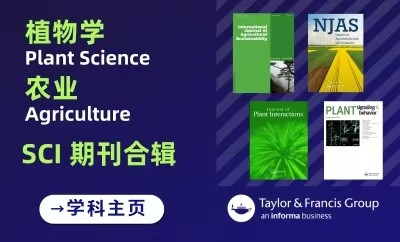













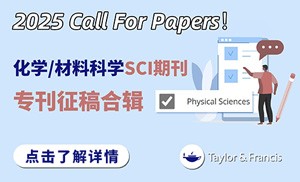


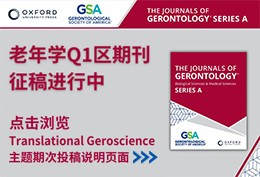

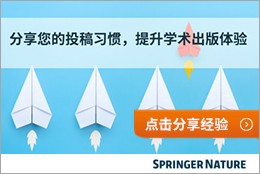
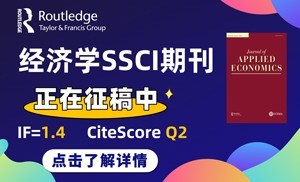



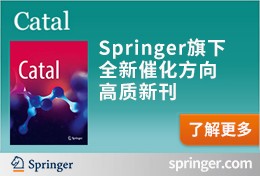
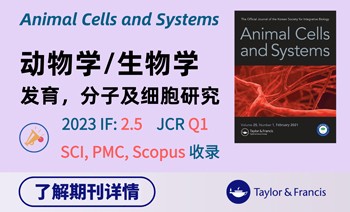


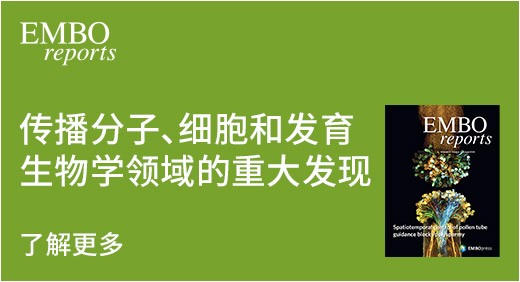
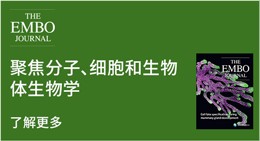
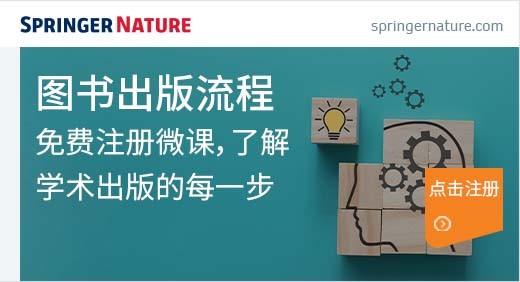

















 京公网安备 11010802027423号
京公网安备 11010802027423号